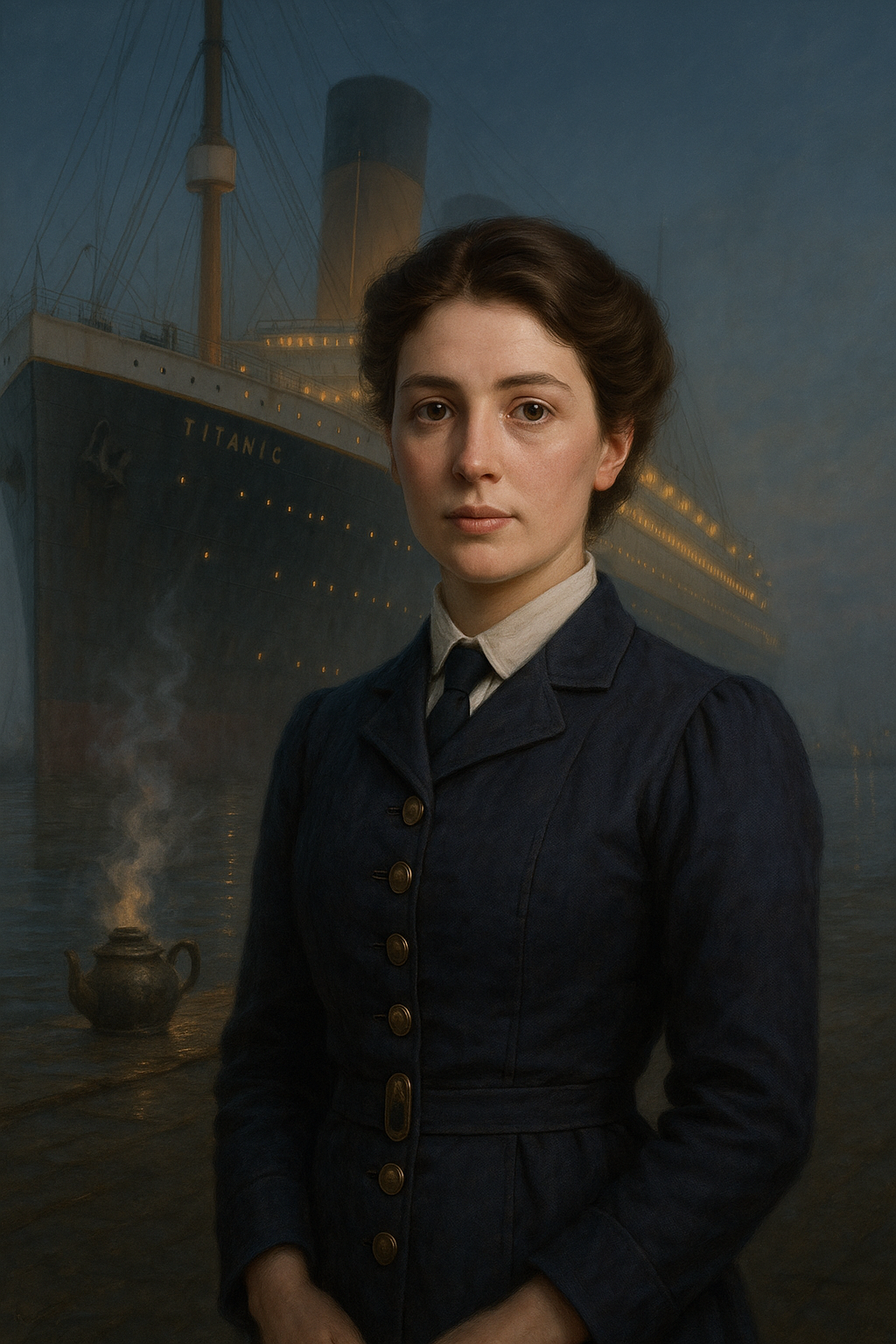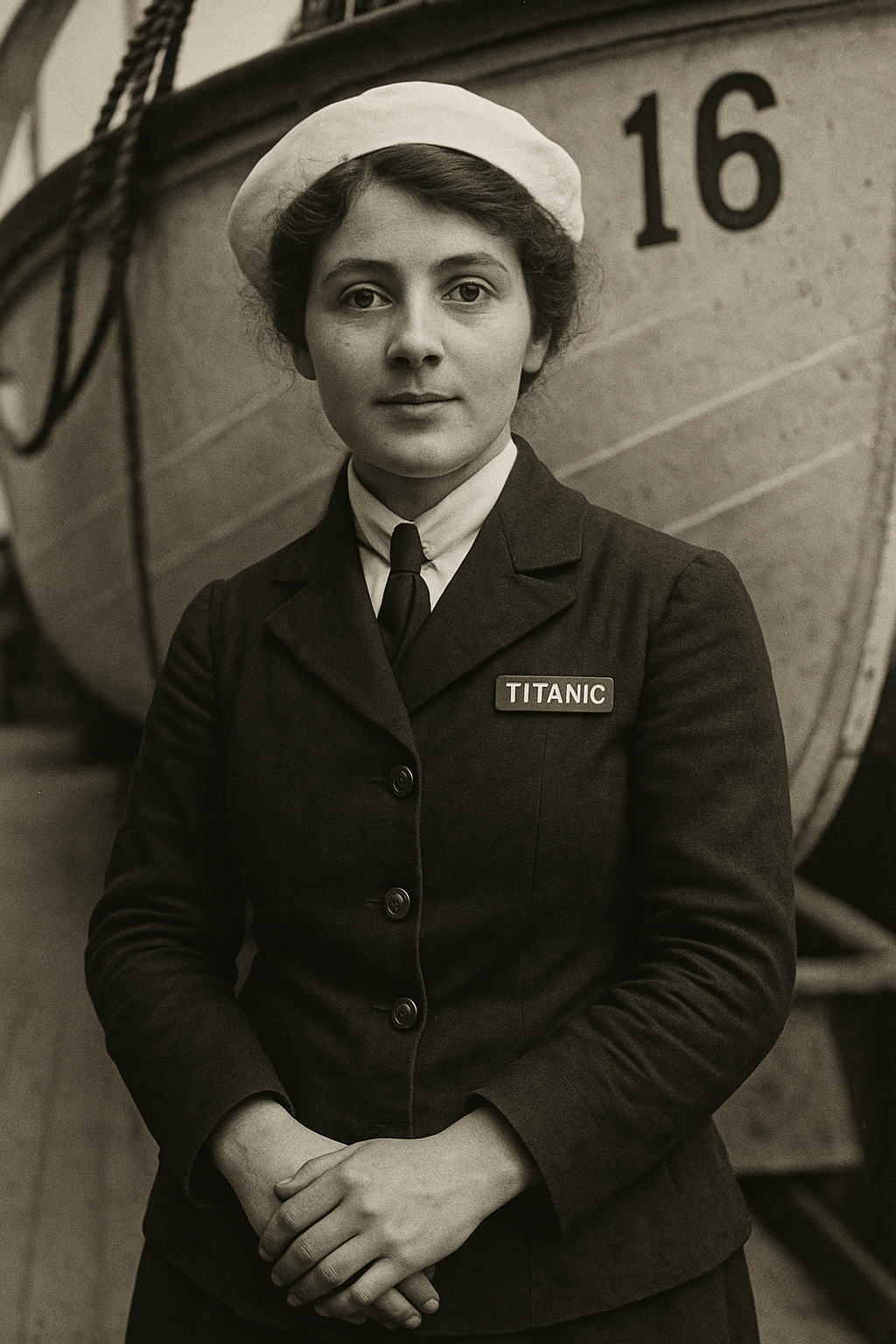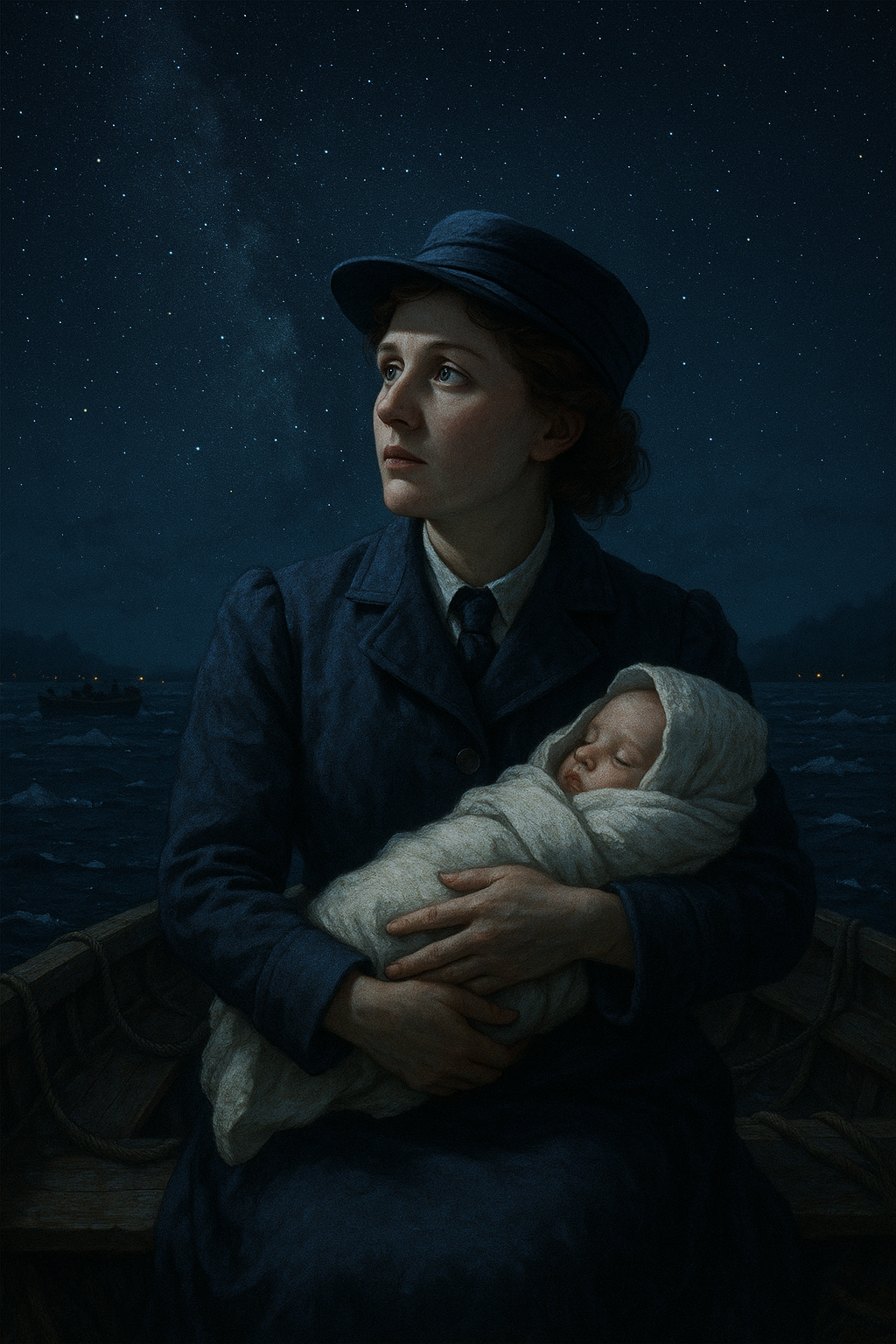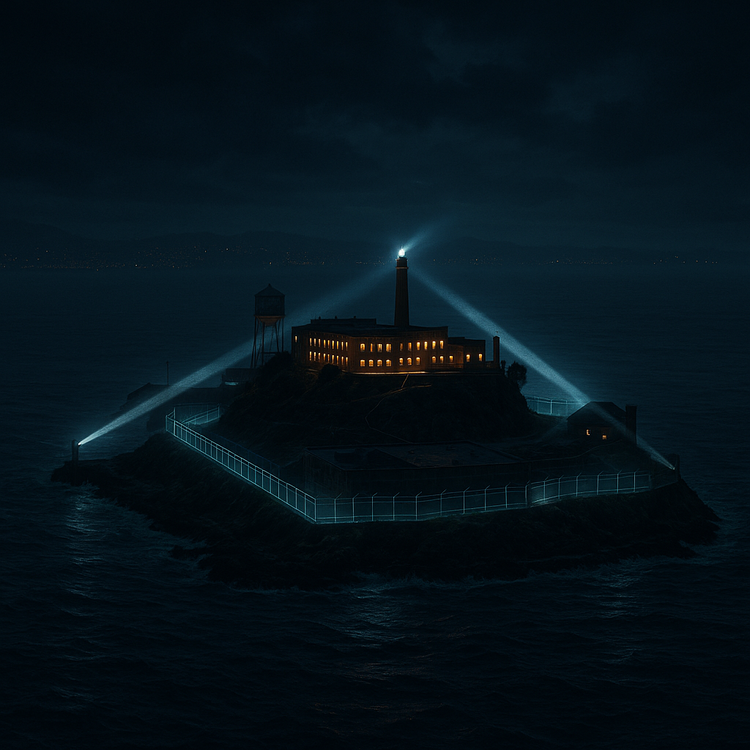The Woman Who Wouldn’t Sink

Imagine getting on a ship — the biggest in the world — knowing it’s your dream job.
Now imagine that ship hits an iceberg, sinks into freezing water, and you're handed a stranger’s baby in the chaos.
Now imagine that happens again. And then again.
Violet Jessop didn’t ask to become a legend. But when the sea tried to take her — three separate times — she said, politely but firmly: “No, thank you.”
This is the story of the unkillable stewardess, the nurse who outlived ocean disasters, and the quiet badass known as “Miss Unsinkable.”
But it didn’t start on a ship.
It started in the dusty plains of Argentina.

A Sick Child on the Pampas
Violet Constance Jessop was born in 1887 in Bahía Blanca, Argentina — land of gauchos and endless skies. She was the first of nine kids in an Irish immigrant family scraping by on a sheep farm. Her parents had come for opportunity. What they got was hardship.
As a child, Violet contracted tuberculosis. In those days, TB was basically a slow death sentence. Doctors gave her months to live.
She outlived them all.
Her father died young, her mother packed the family up and shipped them across the Atlantic to England, and teenage Violet found herself in a convent school by day, and raising her siblings by night.
That might’ve been enough life for some people. But Violet? She was just getting started.

The Stewardess Disguise
Violet’s mother worked as a stewardess on ships, and when she fell ill, Violet stepped up. But being young and attractive was actually a problem. Shipping companies didn’t want “distractions” on board.
So Violet showed up in shabby clothes, with no makeup, and a plain face. Hired on the spot.
At 21, she joined the crew of the Orinoco. Her job? Serve tea, make beds, stay invisible.
And it worked. For a while. Then came the Olympic.
Incident One: The Olympic Collision (1911)
The Olympic was a gleaming white monster of the sea — Titanic’s big sister. Violet was on board when it collided with a British warship, the HMS Hawke, tearing a hole in its side.
No one died. No big headlines. Just a rattled crew and a damaged hull.
Violet didn’t even mention it in her memoir.
But it set a tone: big ships were not as unsinkable as they seemed.

Titanic: The Night Everything Froze
April 1912. Violet was transferred to the Titanic, a ship so famous now it’s hard to imagine it was once just a job posting.
The journey began in Southampton. Jessop remembered the vibe: a mix of “hope, high society, and heavy lifting.” She served first-class passengers. Linen folded perfectly. Silver polished.
Then came April 14th. The iceberg. The chaos. The screaming.
Violet was told to show passengers how to put on lifejackets — many didn’t speak English. Then, without warning, she was shoved into Lifeboat 16. A woman placed a baby in her arms and said nothing.
She sat for hours in the freezing dark, the baby silent against her chest, as the Titanic broke and sank.
When the Carpathia rescued them, a woman walked up, grabbed the baby, and left. No names. No thank you. Just gone.
Years later, Violet got a mysterious phone call from someone claiming to be that child. The woman said, “I was that baby.” Violet had never spoken of it publicly.
She hung up the phone. Shaken.

War Nurse and the Britannic Blowout (1916)
By World War I, Violet had swapped teacups for tourniquets. She joined the British Red Cross and boarded the Britannic, now a hospital ship.
In the Aegean Sea, the ship struck a German mine and sank in just 55 minutes.
As she escaped in a lifeboat, the ship’s massive propellers began sucking the tiny craft backward. Violet jumped — seconds before the blades chewed through the lifeboat behind her.
She cracked her skull in the water. Didn’t stop her.
Years later, when complaining of headaches, a doctor found evidence of the fracture. She’d kept working with a literal hole in her head.
Violet didn’t call herself brave. Just “lucky.”

A Quiet Defiance
After the war, Violet kept working at sea.
She married once. Briefly. Didn’t talk about it.
She traveled the world — New York, India, Australia — serving tea and watching oceans slide past.
She retired in 1950, bought a cottage in Suffolk, and kept chickens.
When people asked about her Titanic survival, she often shrugged. “It was just part of the job,” she’d say.
But the truth is, Violet Jessop lived through things most people couldn’t even imagine. Not once. Three times.
She wasn’t loud about it. Didn’t seek fame. Just kept going.
Maybe that’s what made her remarkable.
Final Note
Violet died in 1971. No grand ceremony. Just a woman who lived long, laughed often, and beat the sea three times over.
Her gravestone is simple. No mention of Titanic, Britannic, or the hundreds of lives she helped save.
But maybe that’s the way she wanted it.
After all, she didn’t need a monument. She was one.



